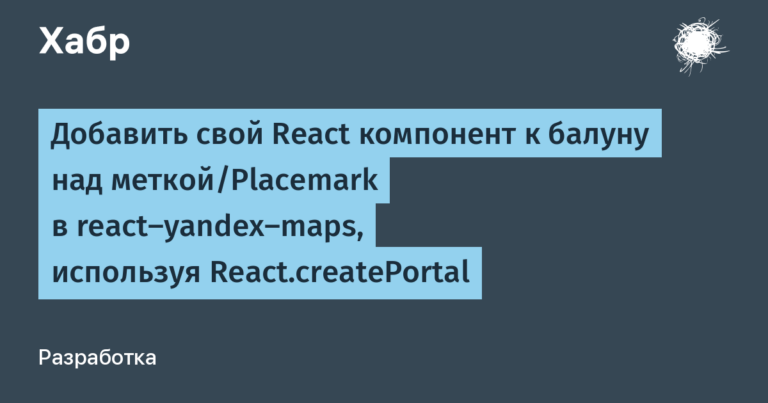Browser for Web 3.0
Under the cut I tried to formalize my subjective feelings in words (KDPV is not mine, it’s all DALL-E).
What is Web 3.0?
I am of the opinion that the Network will evolve in the direction Web 3.0and the concept Web3 (“everything via blockchain”) is only a special case with a limited area of applicability.
So, at the heart of Web 3.0, in my opinion, lies the predominance of interaction between computer systems over interaction between people or between computers and people. That is, if earlier people wrote texts to each other “on the fence” (static sites), then they began to exchange messages with each other (chats), but now, with the development of AI, in “chats”, basically, they will sit and talk to each other “boots“People will communicate with bots at the initial (give a task) and final (get a result) stages.
From the point of view of an individual, as “the center of everything”, Web 3.0 also includes decentralization and private data. But I have a feeling that in Web 3.0, interactions between people and bots are just the tip of the iceberg (~10%). The bulk of interactions on the Web (~90%) are interactions between services (bots).
The main data format in Web 3.0
If the majority of interactions are interactions between services (bots), then it is clear that from “big three” HTML/CSS/JS the second two are not needed there at all, and HTML turns into XML (JSON/YAML/…). That is, for 90% of interaction cases, structured data runs across the Web 3.0 network, and only for 10% of interaction cases will their presentation for humans be necessary.
Personally, my main channel for obtaining information is text and diagrams, but in my circle there are a significant number of people who prefer to use video and audio sources (YouTube and podcasts) to obtain information.
Terminal device for humans
Already now, most people connect to the network through their smartphones. These devices do not at all correspond to the conditions for which classic browsers were designed (large display, keyboard and mouse). The appearance of personal voice assistants (Siri, Alexa, Gemini, Cortana, Alice) in smartphones (and not only in smartphones) takes the interaction of a person and the Network to a level far from text and pictures (and very far from a keyboard and mouse). Smartphones without such services as STT And TTScan already be equated to push-button telephones.
In the case of implanting chips into humans, I believe that human interaction with the Network will still occur through some kind of smartphone. Approximately on the same principle, peripherals in the form of smart watches or fitness bracelets are now connected to the smartphone, and through the smartphone the peripherals are able to interact with the Network. Voice control will receive priority among other methods of communication.
Limitations of a modern browser
Current browsers are specifically limited in their capabilities. Some of these limitations are due to security, some – to the too heterogeneous operating environment (smartphones, tablets, laptops, desktops). Compared to browsers, native applications can better use the hardware capabilities of smartphones (the main end device for humans).
It seems to me that in the browser of the future, specialization will replace universality. The focus will shift from text and images to audio, video information and tactile interaction. And the ability to “browser“interact with hardware”filling” smartphone and its peripherals. Here it will not be as important as “engine” renders the incoming code (all these difficulties with compliance with W3C standards), and what will be more important is how and what smartphone resources the services will be able to use through this “browser“.
Messengers and bots
Messengers such as Telegram, Discord, Slack, WeChat, Viber, … are native applications (have the maximum level of access to the hardware resources of the smartphone) and at the same time have their own API for “programming” interactions with the user inside chats through external services (bots). In other words, each of these messengers is a prototype of “browser of the future”, which can exchange structured information with the bots of the Network and present it to a person (or receive it from a person) through a voice interface or visually. At the same time, messengers are not bound by W3C requirements within themselves – each of them is their own director and sets the rules for interaction with their bots.
JP
Bots outside messengers can be written in any programming language. Inside the messenger, there can be any PL of the authors' choice. But most likely, it will be either something based on the main web programming language (JS), or something based on the main smartphone OS language (Java/Swift). Although Python, Dart, etc. are also possible. It is not necessary to reproduce the entire functionality of the basic PL, it is enough to select only a part (similar to the RISC architecture of processors).
Smartphones have enough power to be able to “bots outside messenger” run directly on the smartphone, not on the Internet. In this case, you can “heavy“to perform calculations as efficiently as possible taking into account the available hardware, and to exchange information”local bot” with the messenger itself may not be much different from the exchange with “network bot” (but the opportunity to work offline appears).
Conclusion
In the future, in my opinion, the HTML/CSS/JS triad will significantly lose its relevance. The main interaction on the Web (90%) will take place in text format between services. Interaction with data for people and from people will mainly be carried out through smartphones (or their like). The importance of text content will significantly decrease, while the role of audio and video communications will increase significantly. The key tool for human interaction with the Network will be a native application (like a messenger), supporting the expansion of functionality through both network and local bot services. Within such an application, the capabilities of programming user interaction will be standardized and simplified, with the possible emergence of shortened versions of general-purpose programming languages. At the same time, integration with the hardware resources of smartphones and peripheral devices will improve.
This will be the browser for Web 3.0.





